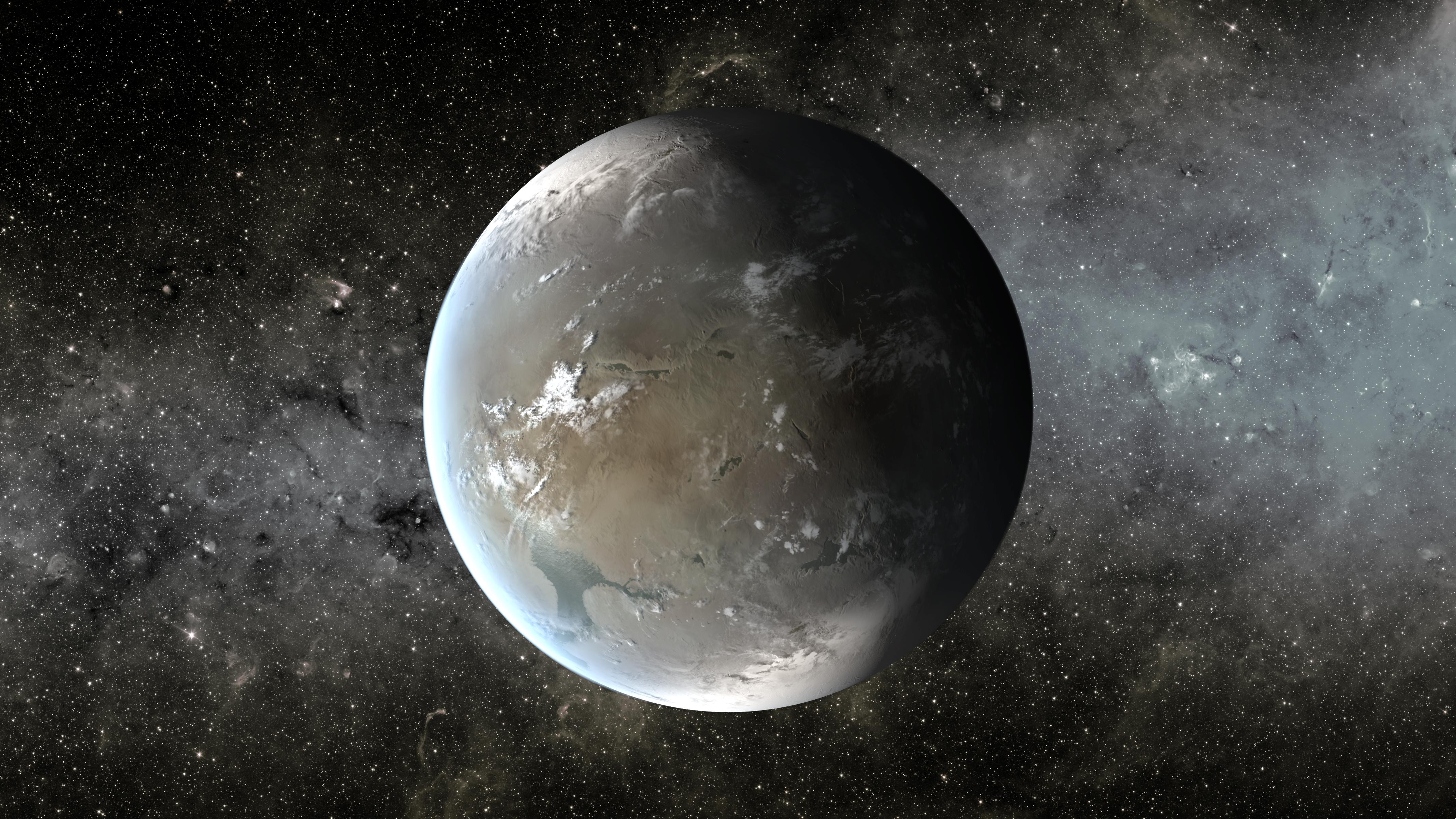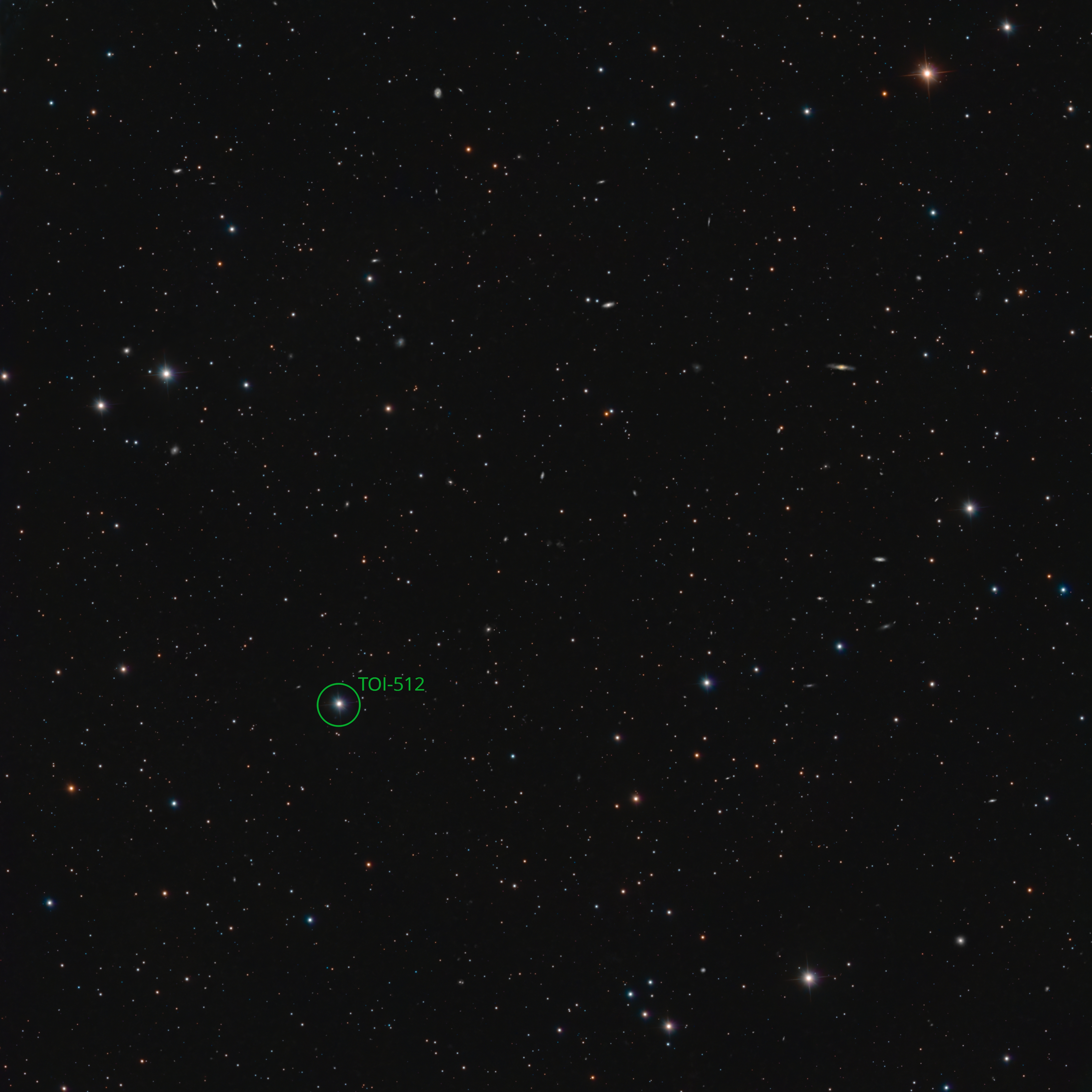
A super-Earth that could explain the universe's mysterious lack of certain exoplanets has been found by NASA's Transiting Exoplanet Survey Satellite (TESS) and the planet-measuring ESPRESSO instrument on the Very Large Telescope in Chile.
"It's a small addition to the already long list of known planets, but such discoveries are essential to improve our understanding of the mechanisms of planet formation and evolution," said José Rodrigues of the Porto Institute of Astrophysics, who led the study, in a statement. "Many more [planets] will be needed to transform our hypotheses into scientific certainties."
The exoplanet, named TOI-512b, is located 218 light-years away. It was first identified by TESS in 2020, which saw the planet transit, or regularly move in front of, its star, blocking some of the star’s light from reaching our vantage point in the cosmos. Based on the amount of light blocked, astronomers measured TOI-512b's radius to be 1.54 times the size of Earth's.
To confirm that TOI-512b is a real planet, and not a false-positive brought about by activity on the star, the ESPRESSO (Echelle Spectrograph for Rocky Exoplanets and Stable Spectroscopic Observation) instrument on the Very Large Telescope measured the radial velocity of the world's star. This is the "wobble" in the star's rotation brought about by the gravity of the orbiting planet tugging on the star. ESPRESSO’s measurements determined TOI-512b’s mass to be 3.57 times that of Earth's.
Knowing its radius and mass, astronomers could then calculate the average density of TOI-512b, determining it to have a bulk density of 5.62 grams per cubic centimeter. This is slightly denser than Earth, which has an average density of 5.52 grams per cubic centimeter.
If TOI-512b were the size of Earth with this density, we would infer a solidly rocky planet — but TOI-512b is larger and more massive than Earth, and so the story is more complex.
TOI-512b orbits its star every 7.1 days at a distance of just 9,863,797 kilometers (6,129,079 miles). This means that it gets rather hot — it's too close to its star to be in the habitable zone, receiving 112 times as much heat from its star as Earth does. Its size also places it just below what researchers call the "hot Neptune desert."
Astronomers are finding exoplanets of myriad sizes and masses, but there seems to be a dramatic dearth of worlds between about 1.8 and 2.4 times the radius of Earth. This is the aforementioned desert, and one theory is that as Neptune-size worlds rich in gas and ice migrate inwards towards their star, stellar radiation blows their atmosphere away, removing much of the gas and leaving a smaller world at the end of the process.

The other possibility is that it is leftover heat from a planet's formation that seeps out from its interior and into its thick gaseous layer, heating it so that it can escape more easily. This is referred to as core-powered mass loss.
TOI-512b could have once been a Neptune-like world that lost most of its gas. Based on its density, mass and volume, Rodrigues' team modeled what the interior structure of the planet might be. They conclude that the best-fit model describes a small inner core making up 13% of the mass of the planet, a mantle contributing 69% and a water layer of up to 16% of the planet’s mass, with the remaining 2% given over to the now-depleted gaseous layer. Compare that to Earth, where the mass-fraction of water is just 0.02%.
Yet if TOI-152b had been reduced by stellar radiation, there would be no water or atmosphere left at all. Instead, Rodrigues' team suggest that the core-powered mass loss is the better explanation, particularly for TOI-152b's age of 8.235 billion years (albeit with an uncertainty of 4.386 billion years), since core-powered mass loss is a process that can last billions of years.
That's not to say that all planets that pass through the hot Neptune desert lose their gaseous envelopes in this same way. It's possible that their gaseous layer can be removed by one or both of solar radiation and core-powered mass loss, depending upon the planet and the star. As Rodrigues stated at the beginning of this article, astronomers need many more examples before they can begin drawing solid conclusions.
The study also ruled out a second candidate planet that had been hinted at in the TESS observations. As for follow-ups, the planet might be a little too distant and difficult for the James Webb Space Telescope to perform transit spectroscopy — that is, studying a planet's atmosphere when that planet transits its star and some of the starlight is filtered through the atmosphere – with Rodrigues’ team suggesting that this process with the JWST might be "tedious." Instead, they propose that the ANDES (Armazones high Dispersion Echelle Spectrograph) spectrometer on the forthcoming 39-meter (128 feet) Extremely Large Telescope at the European Southern Observatory in Chile might have better luck.
The findings about TOI-512b were published on March 25 in Astronomy & Astrophysics.







